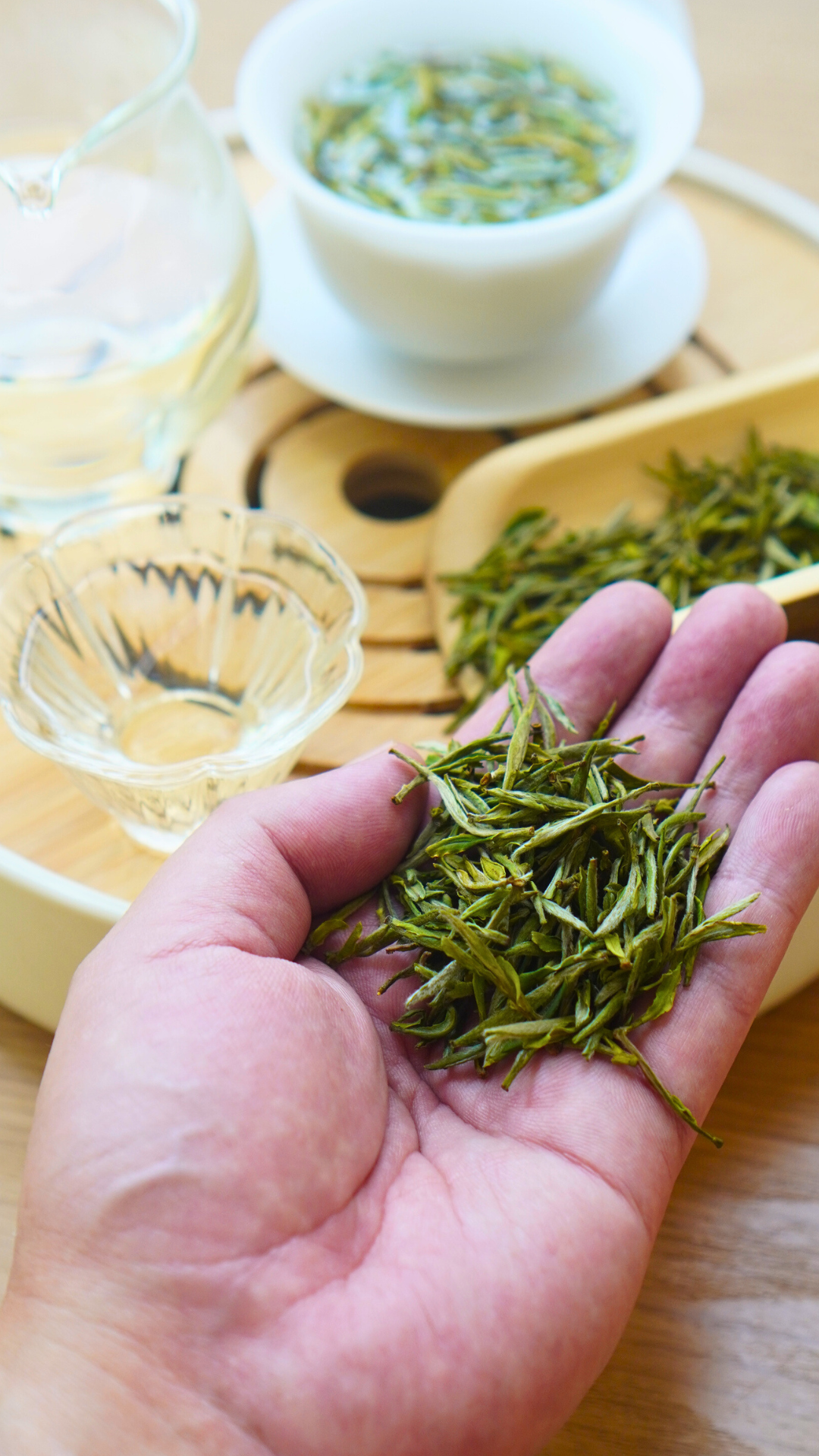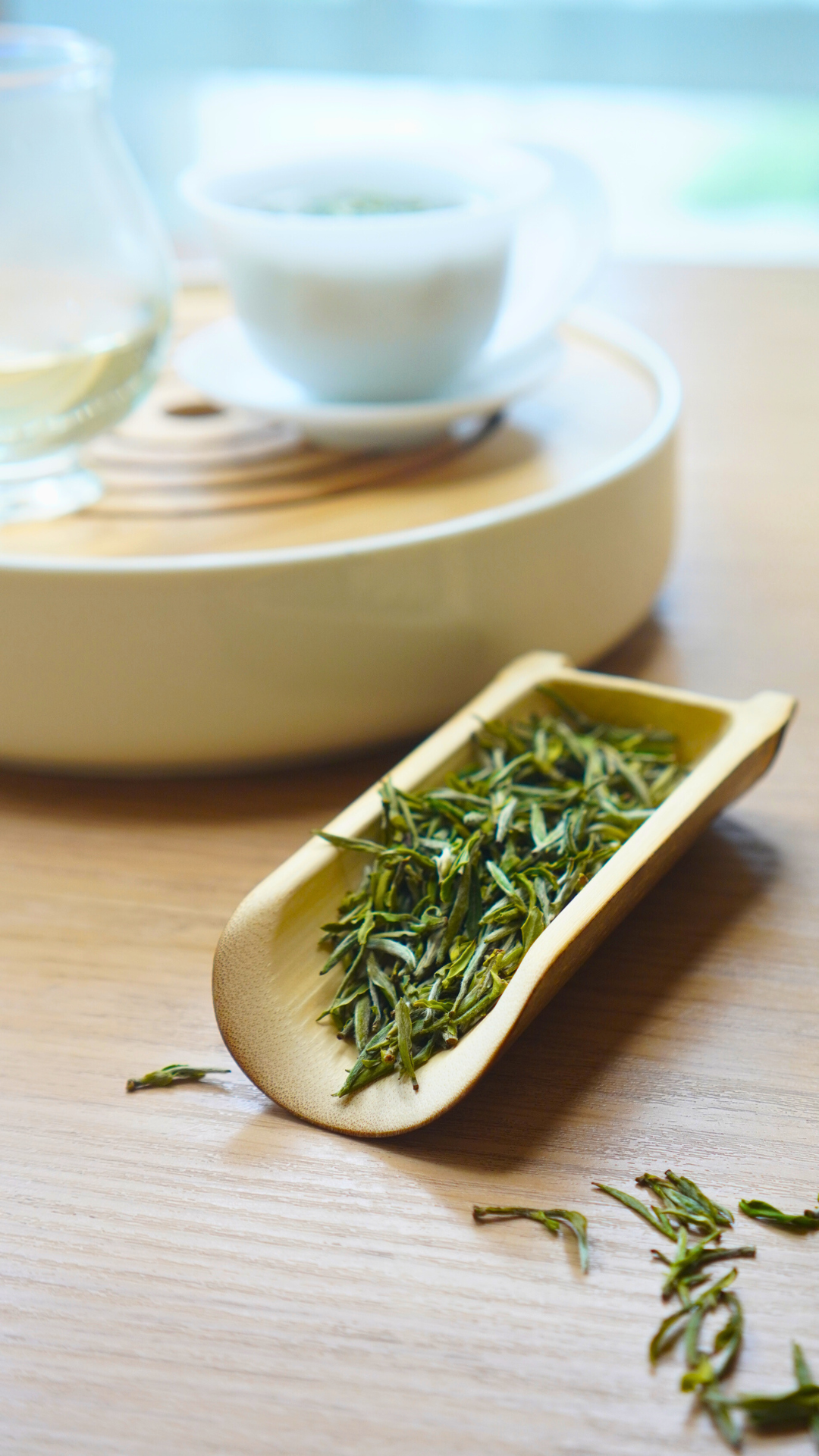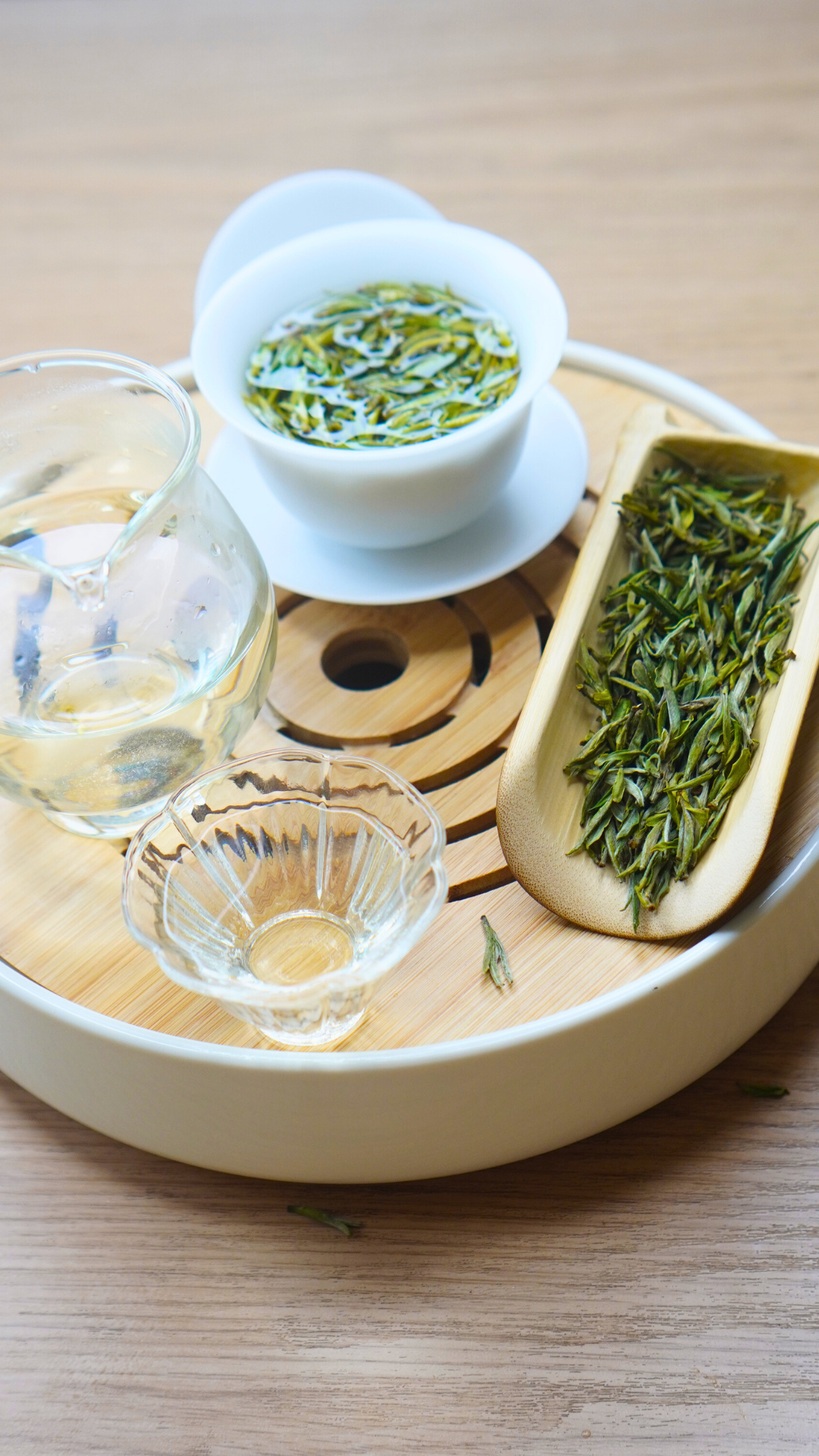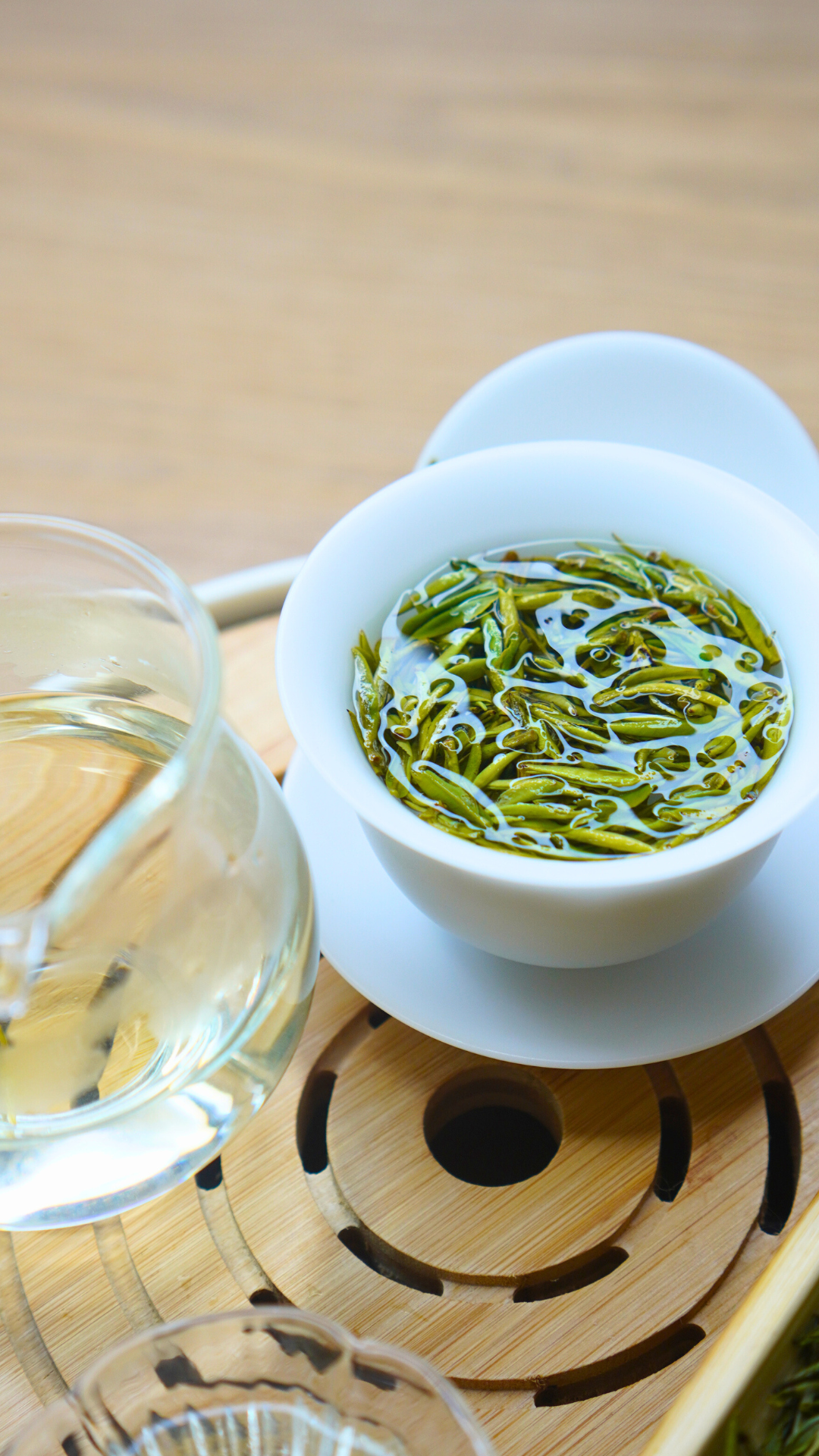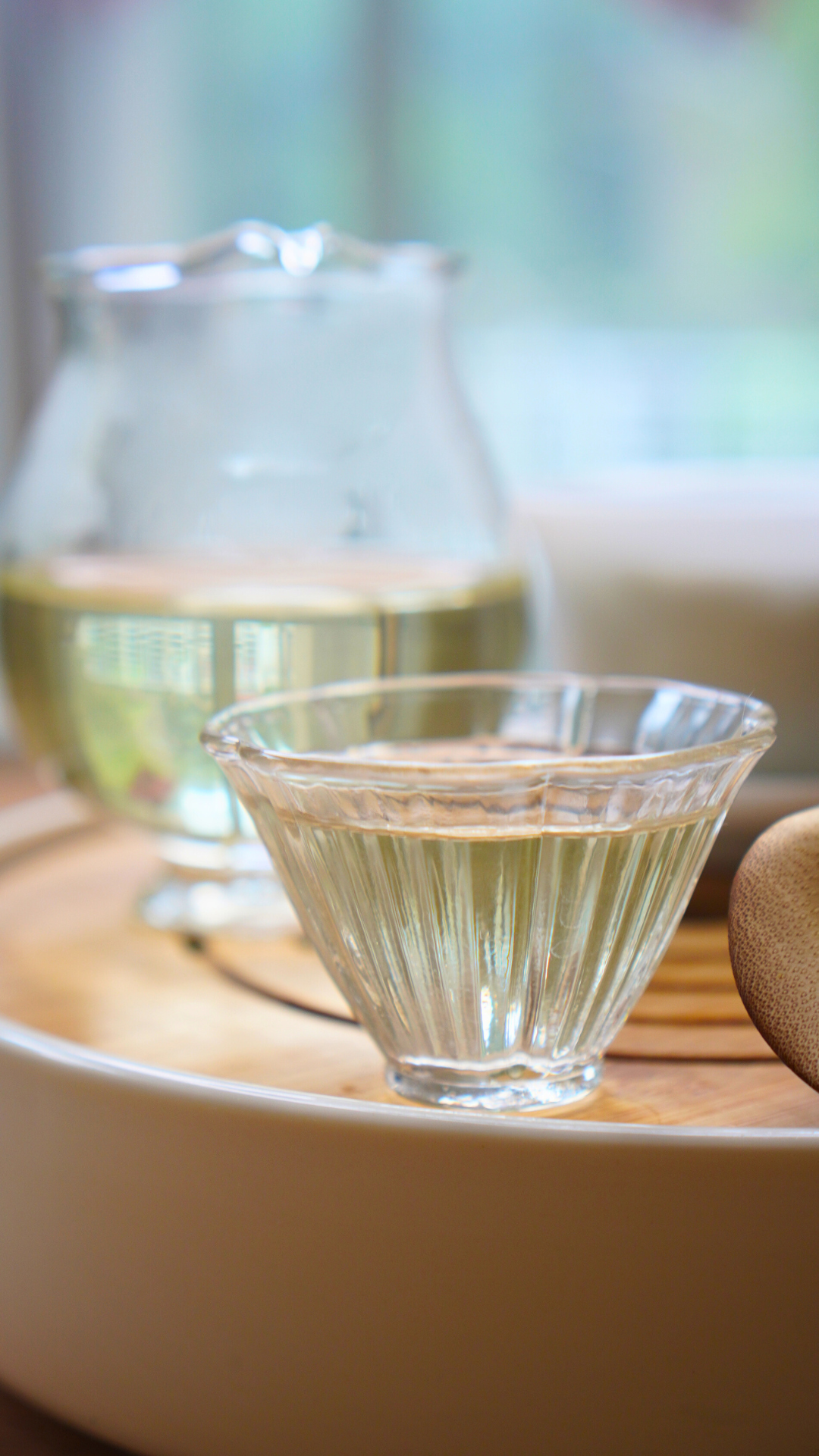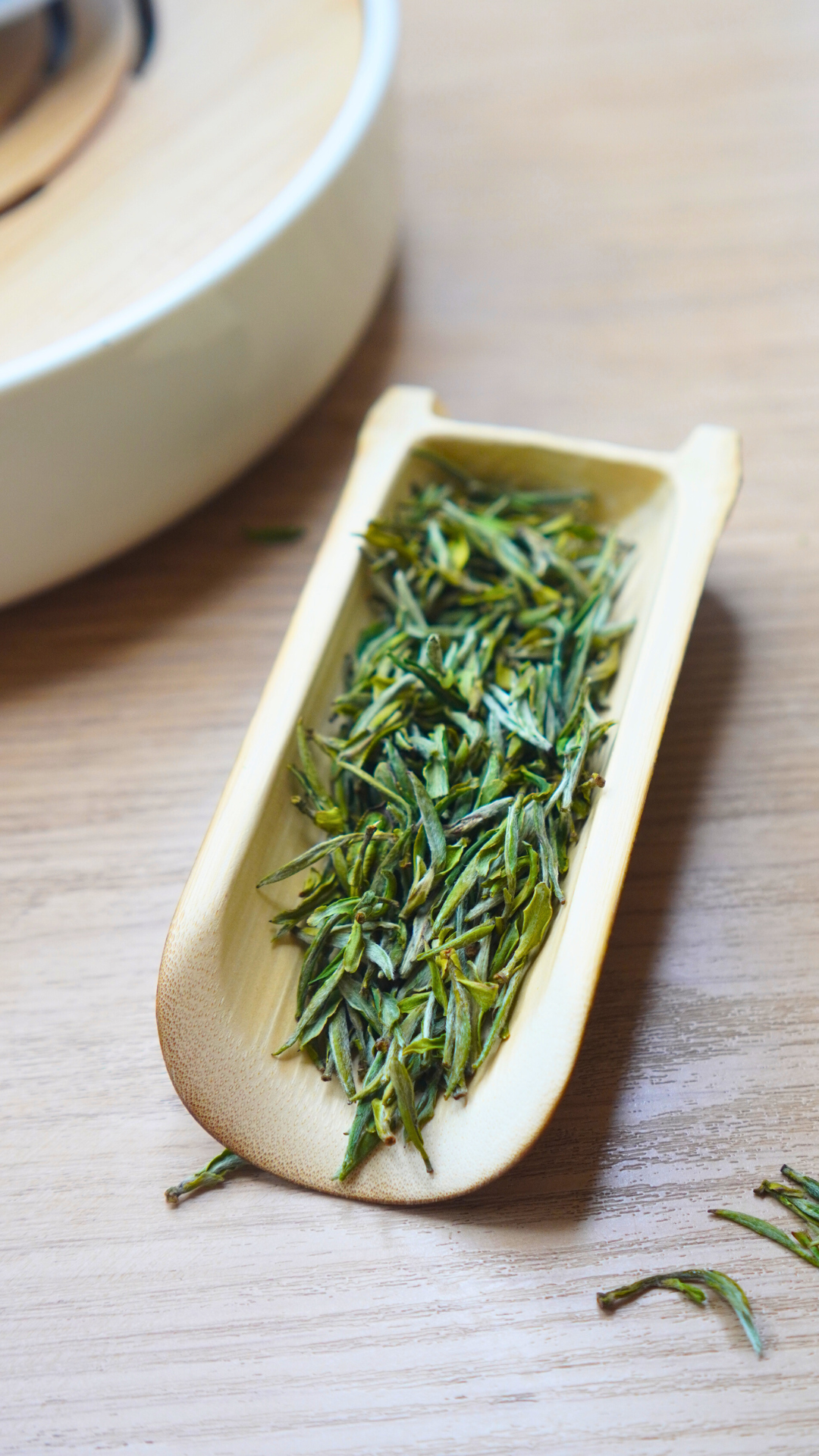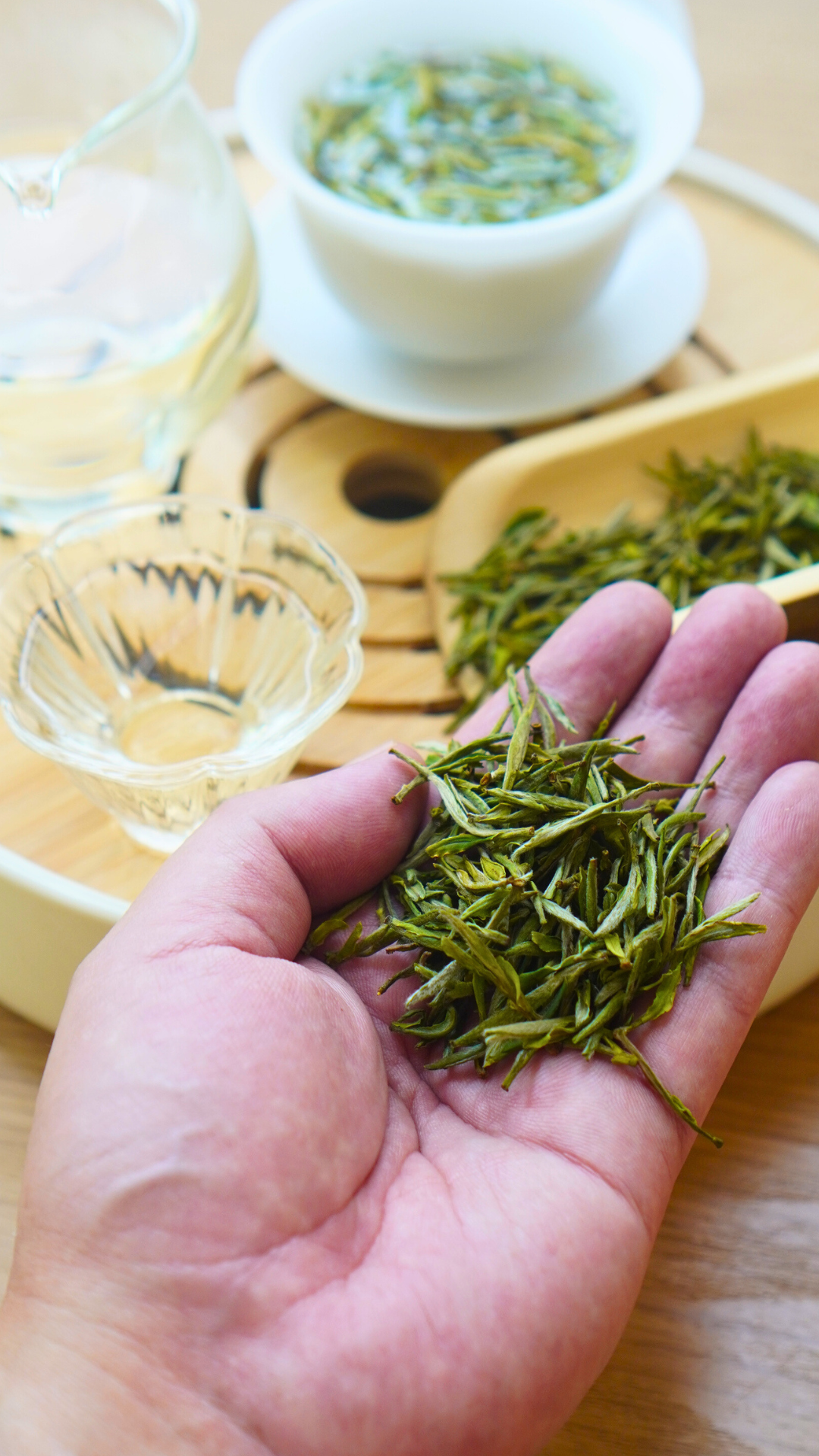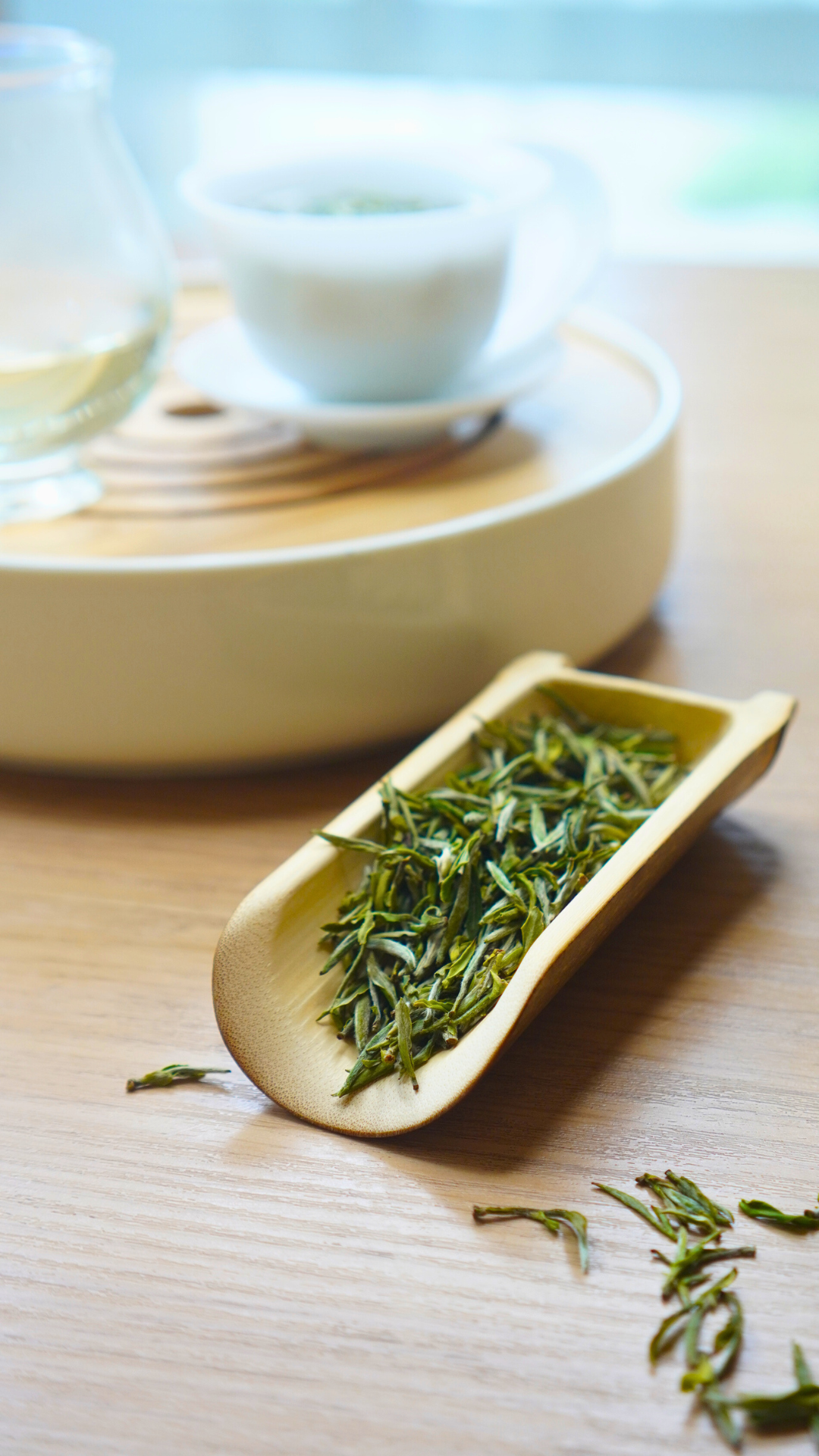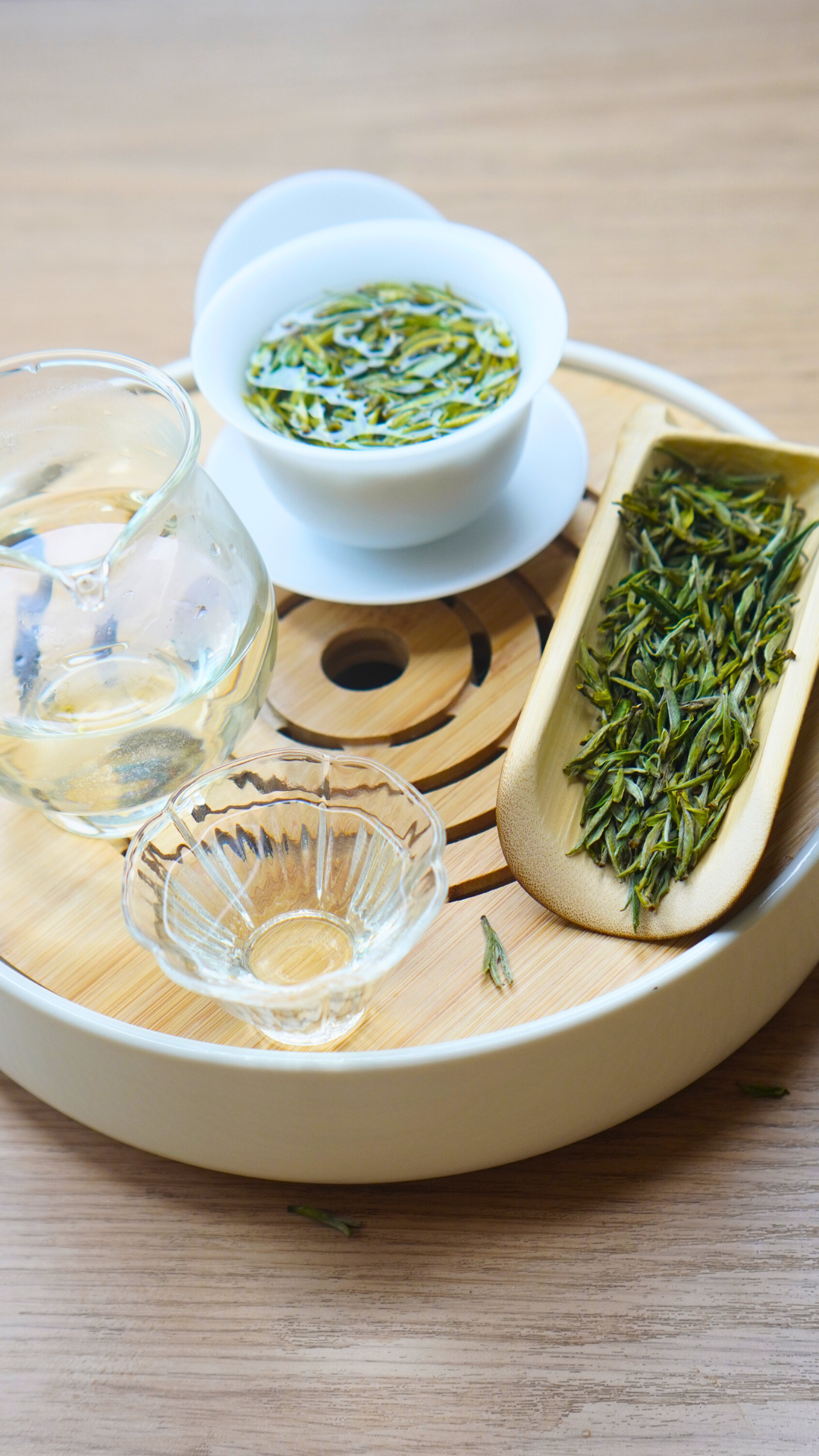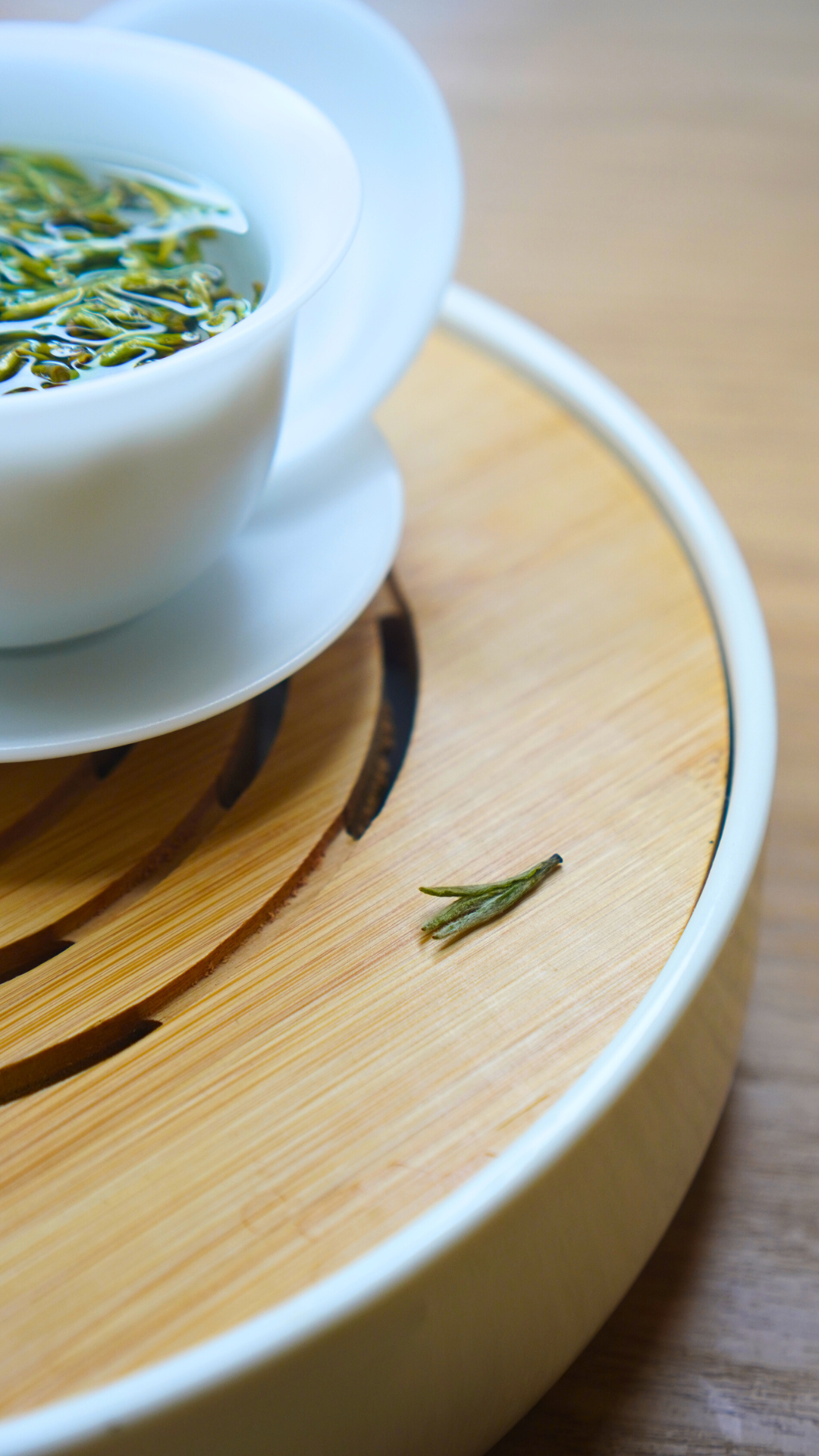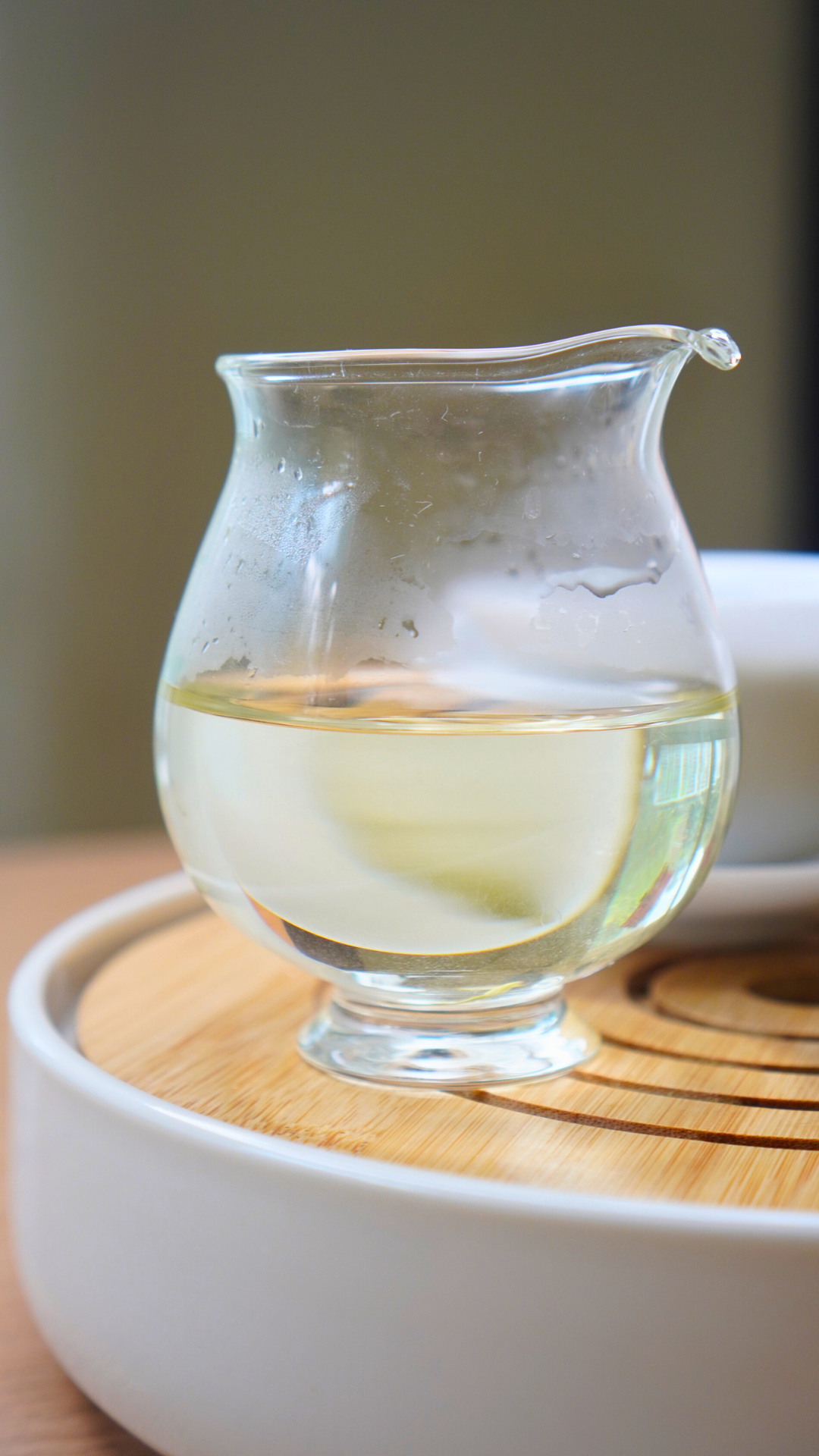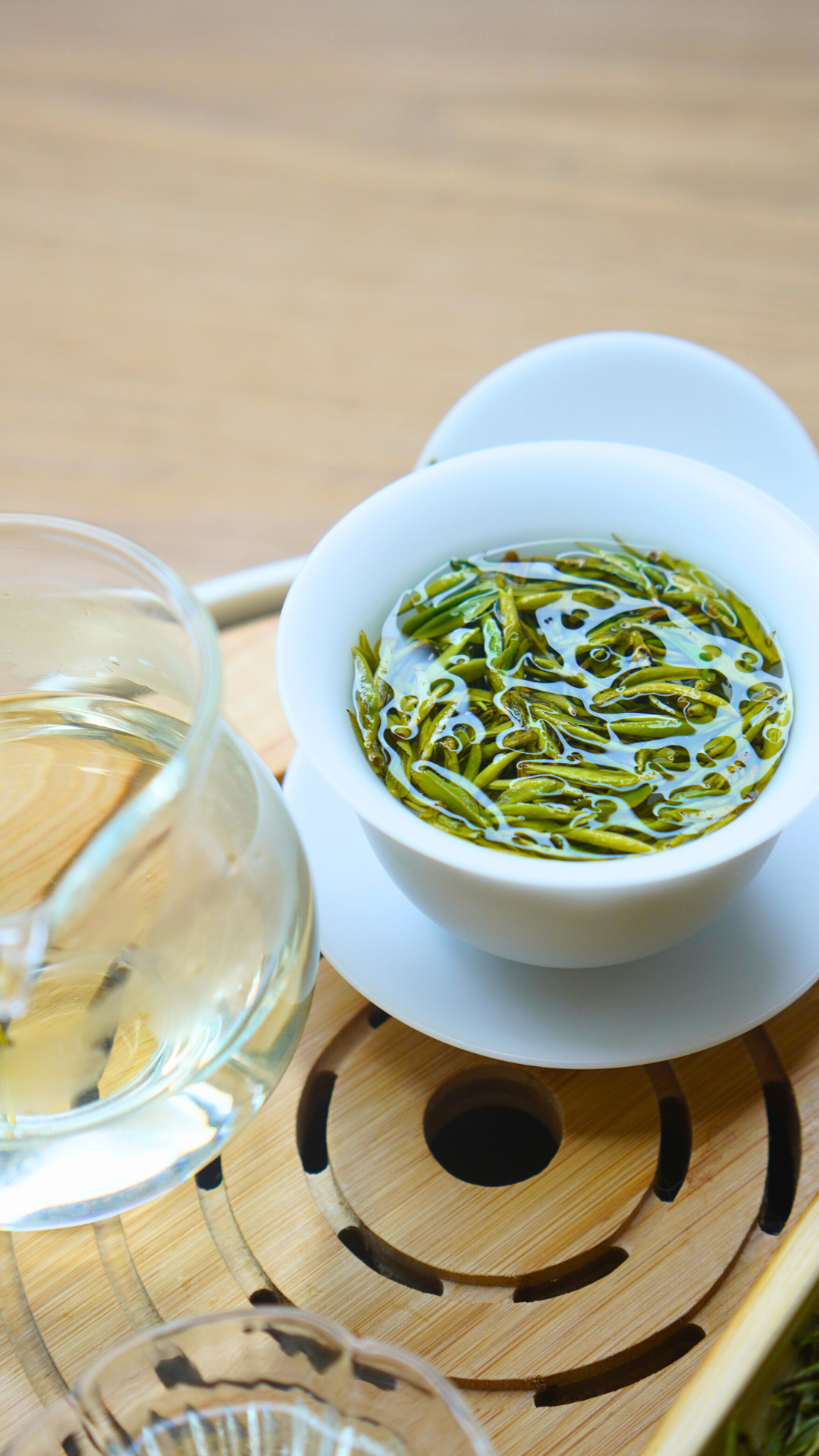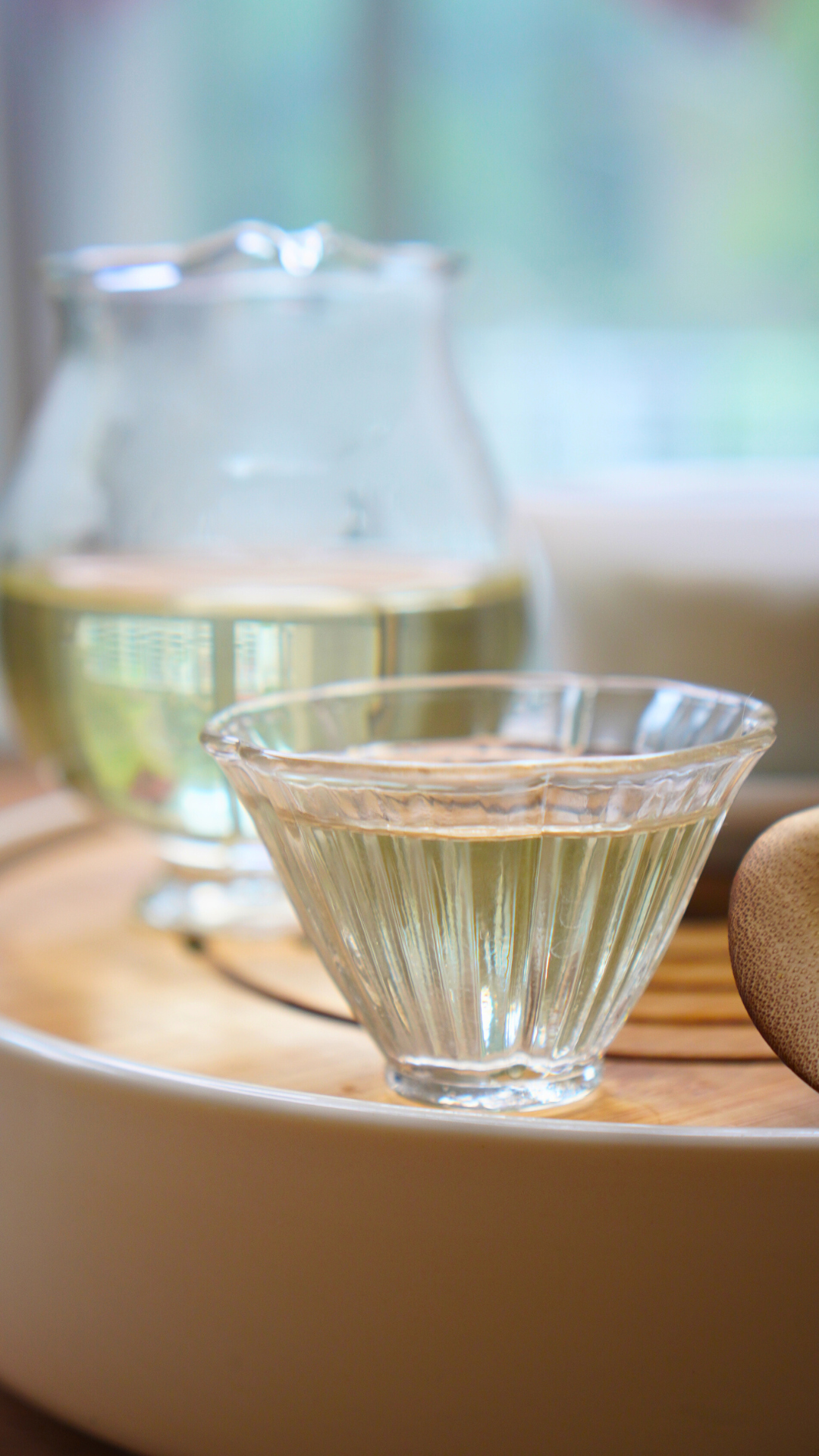First Flush Huangshan Maofeng
First Flush Huangshan Maofeng
开园头采雀舌级黄山毛峰
This Huangshan Maofeng green tea is harvested from the core producing region of Huangshan (Yellow Mountain) in Anhui(安徽黄山), China. Grown at elevations above 700 meters, the tea gardens are nestled in misty, high-altitude terrain with clean air and rich soil—ideal conditions for nurturing premium tea leaves.
Picked before the Qingming Festival, this tea is made from the first flush of the season, selecting only the tender bud-and-one-leaf shoots. The picking standard is strict and yields are limited, making this an exceptionally rare and valuable tea. As one of China's top ten famous teas, Huangshan Maofeng has a long history dating back to the Qing Dynasty. Its name refers to its origin and the fine, hair-covered leaf tips that resemble mountain peaks.
The dry leaves are slightly curved and straight, resembling bird tongues, with a soft yellow-green hue and visible white fuzz. Once steeped, the tea releases a delicate orchid fragrance that is both elegant and refreshing. The liquor is clear and bright, offering a crisp, mellow taste with a lasting sweet aftertaste that lingers in the throat.
Picking and Processing
Picking and Processing
Picked before the Qingming Festival, this tea is made from the first flush of the season, selecting only the tender bud-and-one-leaf shoots. The picking standard is strict and yields are limited, making this an exceptionally rare and valuable tea.
Brewing
Brewing
We recommend brewing with water at 80–85°C (176–185°F) in a glass or gaiwan to fully enjoy the tea’s graceful unfurling and aroma.
Green Tea Storage
Green Tea Storage
It's recommended to store about 50g of green tea in sealed bags in a cool, dark cabinet or drawer for daily use. If room temperature is high, refrigerate at 0-5°C. Store remaining tea sealed in the freezer. This way, green tea can maintain its flavor for up to 2 years.
First, high temperature is the biggest concern in storage. For tea leaves, especially green tea, temperature is the most crucial factor to monitor. This is mainly because high temperatures accelerate the degradation of chlorophyll in green tea, continuously converting it into pheophytin, causing the color to turn dark brown. Research shows that for every 10°C increase in temperature, the rate of browning accelerates 3-5 times, and tea leaves easily become stale. Additionally, high temperatures intensify the auto-oxidation of tea polyphenols, dramatically reducing their content and thereby decreasing the tea's value.
Second, light exposure is another factor to avoid when storing green tea. Especially during summer and autumn when light is much stronger than in other seasons, improper storage can cause plant pigments and lipids in green tea to undergo chemical reactions, producing various off-flavors and resulting in a sun-damaged taste.
Third, foreign odors must be avoided. Particularly in summer and autumn when temperatures are generally higher, items tend to emit strong odors during storage, and green tea easily absorbs these odors, leading to deterioration. Therefore, isolation from foreign odors is essential during storage.
Finally, oxygen is the root cause of off-flavors in almost all stored items. This is because oxygen can catalyze or play a crucial role in many chemical reactions. Tea polyphenols in green tea are strong antioxidants, making them highly susceptible to oxidation. After oxidation, the brewed tea turns deep yellow and loses its fresh green tea aroma.
Common Storage Methods for Green Tea
1. Plastic Bag and Aluminum Foil Storage Method: Choose food-grade plastic bags with seals, preferably those with high density and good material quality. Avoid using scented or recycled plastic bags. After placing tea in the bag, squeeze out as much air as possible. Using a second plastic bag in reverse direction is even better. Clear plastic bags should avoid sunlight exposure. Aluminum foil bags work on similar principles. Additionally, divide purchased tea into separate sealed bags, store them in the refrigerator, and brew in batches to minimize air exposure after opening, thus slowing quality deterioration.
2. Metal Container Storage Method: Choose iron, stainless steel, or dense tin containers. For new containers or those previously used for other items with residual odors, place some tea powder inside, close the lid, shake in all directions to wipe the inner walls, then discard to remove odors. Double-lidded stainless steel tea containers available in the market are convenient and practical. Using clean, odorless plastic bags inside metal containers with tape-sealed lids is even better. Metal containers with tea should be kept in cool, shaded places away from direct sunlight, odors, moisture, and heat sources. This prevents rust and slows tea aging and deterioration. Tin containers are particularly effective at preventing moisture, oxidation, light exposure, and odor absorption.
3. Low-Temperature Storage Method: Maintain tea storage environment below 5°C using refrigeration or freezer storage. Note that for storage periods under six months, refrigeration at 0-5°C is most economical and effective; for periods over six months, freezer storage (-10 to -18°C) is better. Tea should be properly packaged and completely sealed to prevent odor absorption. When purchasing large quantities, divide into small packages (containers) before refrigeration/freezing, and remove only the amount needed for brewing. Avoid repeatedly freezing and thawing the same package.
- Loose Green Tea
- 500g/pouch
- Free Shipping
Couldn't load pickup availability

